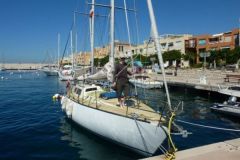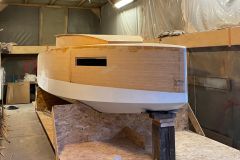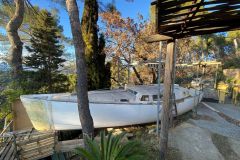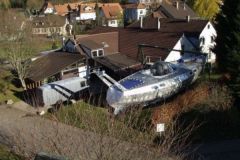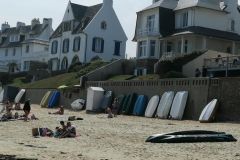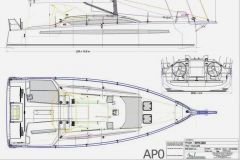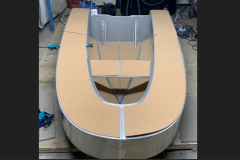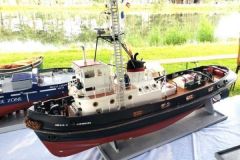Sandwich parts on a sewn-and-glued boat
The Scout 14, the dinghy Matt chose as the tender for his 60-foot Duracell, isn't your typical plywood sailboat. While it uses the sewn-and-glued technique already seen in the previous episode, it doesn't just use plywood and epoxy. Sandwich parts are integrated to add rigidity and thickness without adding too much weight. For example, the gunwales and transom have a closed-cell foam core. Matt and the Northwest Maritime Center trainees with whom he is building his boat, learn how to assemble the two materials. The cores are glued to the already-formed plywood outer skin, and positioned with dowels in holes drilled in the kit. A further piece of plywood completes the assembly, ensuring a beautiful wood appearance.
Once all the gluing has been done, all the joints receive a fiberglass skin and are sanded so that the gunwale has no sharp angles.
A sandwich bridge
The deck of the Scout 14 is made entirely of glass-foam sandwich. The kit parts are glued and assembled on a marble, before being vacuum laminated. Final assembly of the boat will begin in the next episode.





